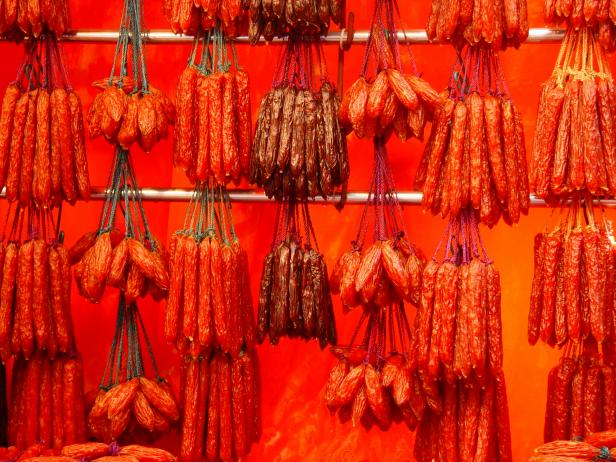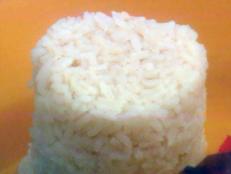Protein with Chinese Origins


nyxx88
Chinese sausages — Called xiang chang or lap cheong in Cantonese, these are made from diced pork belly, pork liver and sometimes duck liver. None of the sausages found in the United Kingdom and United States (i.e., outside of China) contain any liver. Traditionally, the liver-filled sausages are eaten at Chinese New Year and in Cantonese are called “gold and silver” sausages. These types of sausages are cured and they need to be cooked before eating. In Sichuan, they will add spices such as dried chilies or ground Sichuan pepper to give them a kick and they are often wind-dried in dry, cold months during winter when the weather is not damp. You can steam them, then stir-fry in hot oil to crisp them up. They can be used in a variety of dishes from clay pot mushroom to shellfish rice, or can flavor congee or be added to fried rice. They impart a delicious salty, meaty flavor to dishes. If in China, try it; the taste is fantastic, especially homemade varieties.
Jinhua ham — This is otherwise known as the best ham in China, found in the western province of Yunnan. It is a cured and salty ham. This ingredient is used to flavor rice dishes and cold appetizer dishes as well as soups. For recipes, as an alternative, you can use your favorite salt-cured ham or a Spanish ham.
Shark’s fin — This is by far the most controversial ingredient used in Chinese cookery. Traditionally this ingredient is used as a “festival” ingredient to celebrate weddings, birthdays and special banquets. People usually think of shark’s fin as “the dorsal fin,” but the two side fins, lower fins, second dorsal fun, anal fin and tail are also used. Chinese believe this ingredient helps to strengthen the lungs, liver, kidneys and heart and improves one’s complexion. Traditionally it is cleaned, the skin is removed and then the fin is split open to remove the cartilage inside. It is boiled several times to remove any impurities and then dried for later use. It is steamed several times with pork, ginger and scallions (Chinese staples), then braised or cooked with chicken, crab, abalone or dried mushrooms. This type of Chinese “protein” does not contain much amino acid. Due to the cruelty in the way the sharks are slaughtered — fishermen slice off the fins and throw the live sharks back unable to swim, leaving them to drown and die — a worldwide ban is on the horizon. This protein may soon be unavailable as Chinese culture evolves in favor of marine protection.
Sea cucumber — This is otherwise known as a sea slug; it’s found at the bottom of the ocean and has been a prized ingredient used in Chinese cookery for over 1000 years. They are known as the “ginseng of the sea.” They are dried, and as with all dried Chinese ingredients, are presoaked to soften them. These slugs are then slit open and cleaned and boiled in stocks to enhance the flavor of soups and added to braised or stir-fried dishes.
Dried shrimps — Orange-red in color, they are very pungent. These are cooked shrimp that have been dried and salted to preserve them. They are used as a seasoning or in soups to add flavor and texture. To use them, you need to presoak them in hot water for 20 minutes. They do come in a variety of sizes — small river shrimp varieties can also be found that are great in steamed egg dishes, Chinese omelets or vegetable stir-fries.
Dried scallops — This source of protein is also known as conpoy in Cantonese. They are a prized delicacy in China and much more intense than their fresh counterparts. They come dried and need to be soaked in warm water before they are steamed or boiled. They are used in braised and stewed dishes, soups, stir-fries, fried rice and are perhaps an important component in the most luxurious Chinese condiment: aged “XO” sauce. Alongside conpoy, prized ingredients such as dried shrimp, Jinhua ham and Sichuan chile oil are needed to create this mouthwatering sauce used to flavor meat, fish, dumplings and vegetables.












